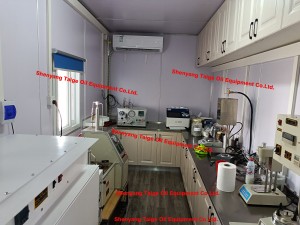Mobile Laboratory Improves Oilfield Cementing Success
A newly built mobile cement-testing laboratory assists in monitoring blended cement quality and design. The unit contains the equipment required to perform tests for oilwell cements described in API’s Spec 10. Case histories are presented describing how use of the mobile cement laboratory improved cementing success on critical cement jobs.
Cementing practices, equipment, and materials have changed as wells have become deeper and technology has advanced. Many cementing systems have been devised. The number of different systems that can be designed by varying the components is almost endless. The pumping time of a cementing system is controlled by the class of cement, the well temperature and pressure, and the type and amounts of additives. In 1939, the first HTHP thickening-time tester was developed, enabling, the industry to forecast slurry performance accurately. Proper “aboveground” density is essential to the successful accomplishment of any well-cementing operation. Only a small amount of water (about 25%) is necessary for cement to set satisfactorily. More water must be added, however, for the cement system to be pumpable. Mixing and pumping equipment has evolved continuously over the past few years. Unfortunately, maintaining slurry density during, cement jobs is still a problem. Cement is usually handled in bulk form, In most cases, additives can be blended with bulk cement to suit any well condition. To achieve success. critical cement-jobs require accurate testing in the laboratory, proper blending of the cement and additives, and correct mixing of the slurry to designed density. A gamut of pilot tests must be run to ensure a good slurry design. After the system has been blended, samples also must be tested. Many oilfiled companies depend solely on the cement service companies to meet these criteria. Chevron, however, has developed a cooperative testing program that works closely with the oilfield service company field and laboratory personnel. This program relies heavily on monitoring the quality and performance of cement and additives. Using this program, Chevron and the service company can verify the slurry performance. Over the past few years, a number of major oil companies have experienced situations in which pilot test and blend sample test results did not correlate. Some companies are willing, to accept a 50% variation in thickening time between the pilot and blend tests. In 2002, we implemented a field study to evaluate service companies’ blending equipment and procedures. The following recommendations resulted from this study:
1.layer the cement and additives,
2.weigh additives on a close tolerance scale,
3.move the cement a minimum of six times before samples are taken, and
4.obtain accurate (representative) samples while the blend is going to the tank in which it will be transported to the rig.
Very close correlation between pilot and blend sample tests was achieved with the implementation of these recommended procedures. While developing these recommendations. we observed a long period between blending, of the cement with additives and testing of the samples. Although the samples were “hot shotted” to both the Chevron and service company laboratories, in most cases, the cement was on location before testing of the blend samples began. In the past, other methods of analyzing cement blend samples. such as a chemical analysis, have been attempted, but none provided the accuracy of a thickening-time test on a high-pressure, high-temperature consistometer. Because of the time required to ship samples and inadequate alternative testing methods, a full-scale testing laboratory with the ability to operate at remote wellsites or service company blending facilities was needed.
Capabilities
We designed the mobile cement-testing laboratory with the following objectives:
equip a self-contained vehicle with equipment that would reliably perform thickening-time. fluid-loss, free-water, and rheology tests on cement slurries for critical casing strings on any well:
1.to provide living accommodations for two people on location:
2.to provide reserve capabilities;
3.to be within the weight limitation of the vehicle:
4.to meet safety requirements;
5.to provide access to laboratory equipment for maintenance and service:
6.to provide for the calibration of the testing equipment; and
7.to be cost-effective.
Post time: Nov-27-2022
